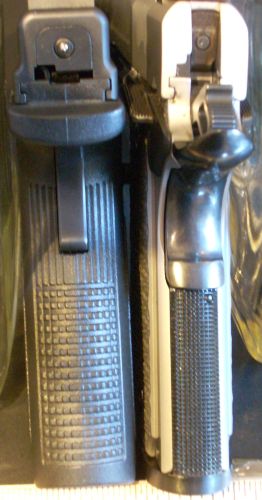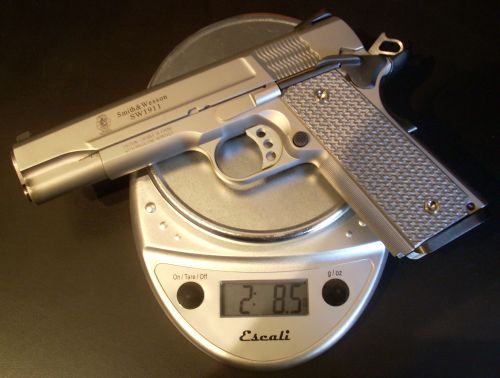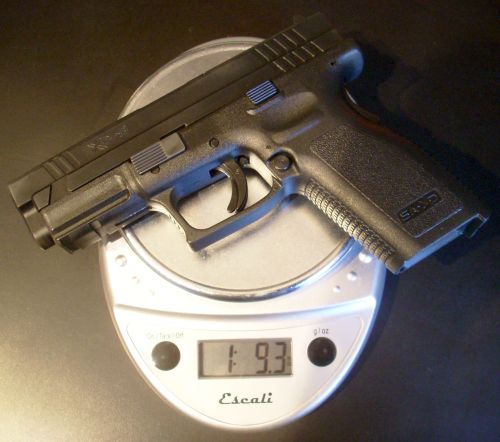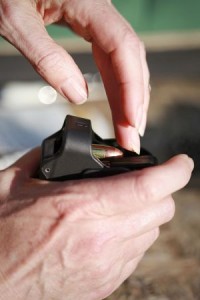
Old or young, we learn one round at a time. [Photo:coleimage.com]
October 23, 2012: On the way up to Oxford I called a friend and told him I was headed up to shoot my Classifier. He asked me what that meant and I said, “Call me tomorrow and I’ll let you know”.
Part of this journey is learning to deal with the unexpected because bad guys aren’t going to give you a heads up and allow you to plan for their malicious or deadly behavior. I did know a Classifier is a specific course of fire. You can hunt down the details and train specifically for that course of fire, but I think that also defeats the purpose. If you place higher than your true skill level by training specifically for the Classifier, the folks you complete against are going to give you a beating until you can shoot that well on unknown stages.
I did know this: bring the gear you use to compete (gun, holster, two magazine pouches, 4 magazines), 2 boxes (50 rounds each) of ammo, and the gear you use every time you shoot: eye and ear protection, a high necked shirt and stable shoes that cover your feet.
I called Frank in advance and asked if a friend could watch. She lives 10 minutes from the range and is a photographer. He said she was welcome and photos were fine. I asked if she could rent eye and ears protection as I didn’t have spares. He said he had some he could loan her. No charge. How could I possibly be nervous shooting with this man?
My friend and I hooked up in the parking area and hunted Frank down in the only functional building on the property. I found Frank friendly, welcoming, and a clear communicator.
The Classifier
Here are the highlights of the classifier. If you want specifics, I’m sure you can hunt that down via Google.
- 90 rounds “limited”. For each course of fire, shoot the number of rounds requested only. No makeup shots.
- There were 3 targets in various heights about 2 or 3 yards apart. All courses of fire were into these targets on a single range.
- No cover garment is required, so I ditched my concealment vest.
- He asked me what my mag capacity was and then asked me to load 15 rounds in all 4 magazines. It speeds up the process as less time is required to reload. Normal IDPA maximum capacity is 10 rounds.
- Shooting scenarios included
- “2 shots to the body” for almost all scenarios
- Limited set of head shots
- Strong hand only
- Weak hand only
- From as far as 20 yards
- Shooting while moving forward
- Shooting while moving backward
- From behind tall cover (both left and right sides)
- Kneeling behind low cover
- Slide lock reloads
- Tactical reloads with retention
- The cost: $2 to cover targets. As Frank put it, “I’ll be collecting $15 every time you show up to compete” and he’s happy with that.
- The time: about an hour.
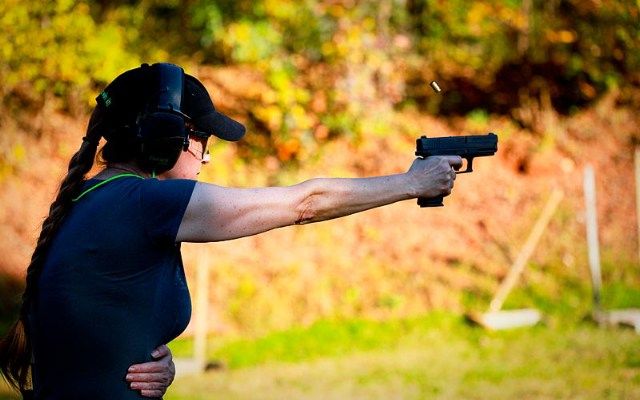
Shooting strong hand only. Non shooting hand tucked tight! Ejected brass is flying above the gun. [Photo:coleimage.com]
Shooting Outside
The weather was great, even though this was late October. The day was clear and in the high 70s. I wore a t-shirt and was comfortable. I do need to think about layers for cold days and how that is going to work with concealment, but that was not an issue today.
This was the first time I’ve shot outside. It was a bright sunny day and I had not thought of getting impact resistant lenses with a sunglass tint. Do they even make something like that? I asked Frank what he recommended and he shared something like this, “The more light you let in, the better your ability to aim”. He doesn’t use sunglasses, he uses his hat. I’d clipped a hat to my range bag a few months back though I’ve never really used it. Today was the day. That worked well.
Every time I’ve shot “on the move” in classes, I had a nice smooth floor with nothing more than ejected brass under my feet. At the Classifier I was walking on gravel and it shifted underfoot. It’s not stable and I do remember thinking, “didn’t think about the ground surface” followed by “I need to come up here to shoot more often.”
A final observation: it’s really fun to see the dirt go “poof” as you bang away at the targets!
After the Shooting Stopped
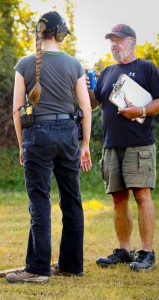
One on one: instructions from Frank [Photo: coleimage.com]
I ranked as a Novice. No big surprise. I obviously slapped the trigger a bunch because many of my shots were low. I slacked off my dry fire practice after the last class I took and I paid for that. I’m motivated to get back to that ASAP.
I joined the IDPA via their website last weekend. They sent me a receipt but no membership number. Frank told me that might take 2 weeks and it would come via US Mail. Once I had the number, drop him email and “he’d take it from there” as far as getting my ranking to them.
The Range
Frank asked if we’d like a tour of the shoot house and my friend was included so we checked it out and she grabbed some photos. The bathroom was especially scary!
I asked what the cost was to shoot up here for practice and Frank said membership was $100 a year. That’s very reasonable, just wish it wasn’t a 2 hour round trip to get there. Of course this may just be the motivation I need to visit my friend more often.
I stuck around to chat with Frank and another fellow that had watched me shoot. Both talked to me about the merits of reloading – which many people have done. But Frank followed up with an offer to walk me through the process. I’d be stupid not to take him up on that.
The Belly Laugh
I got about a mile down the road before it started… a giggle that grew and expanded into a serious belly laugh. It ripples out of me and I love the giddy feeling. Almost every time I shoot this happens. I don’t know if it’s the after effect of adrenaline or where it comes from. But it’s the reason I keep working at this: feeling joy and passion make life so much better.


